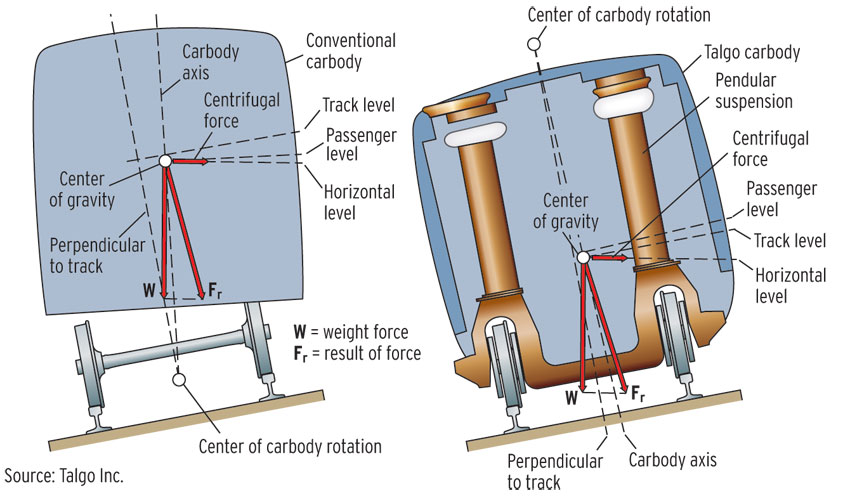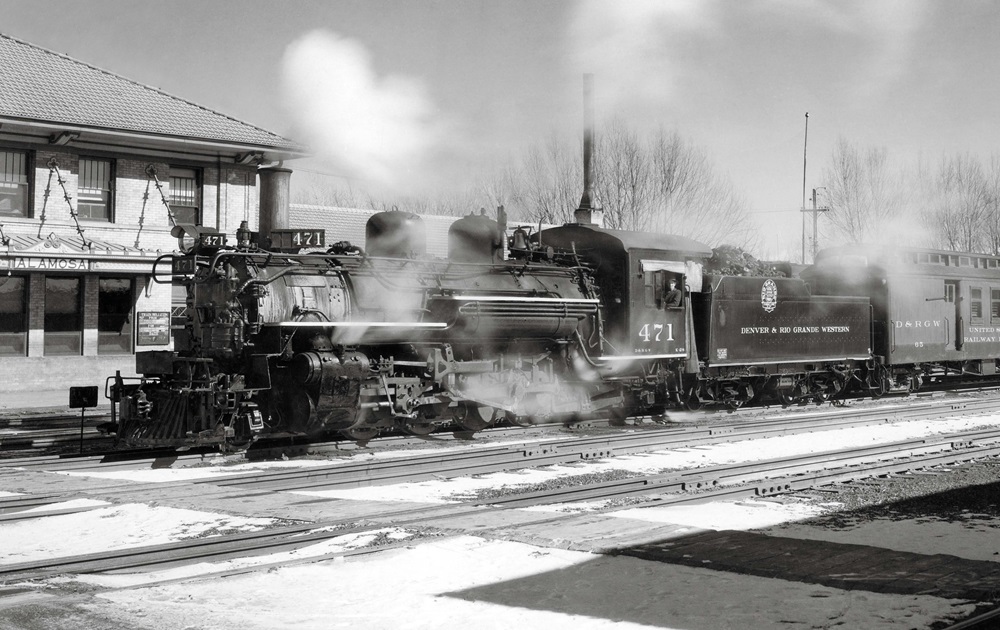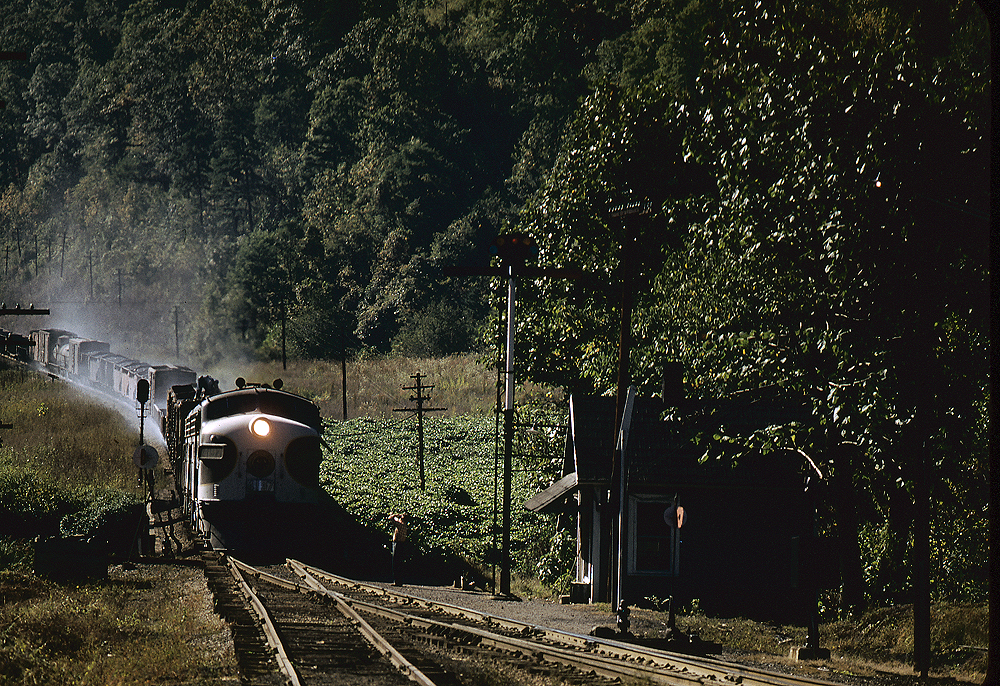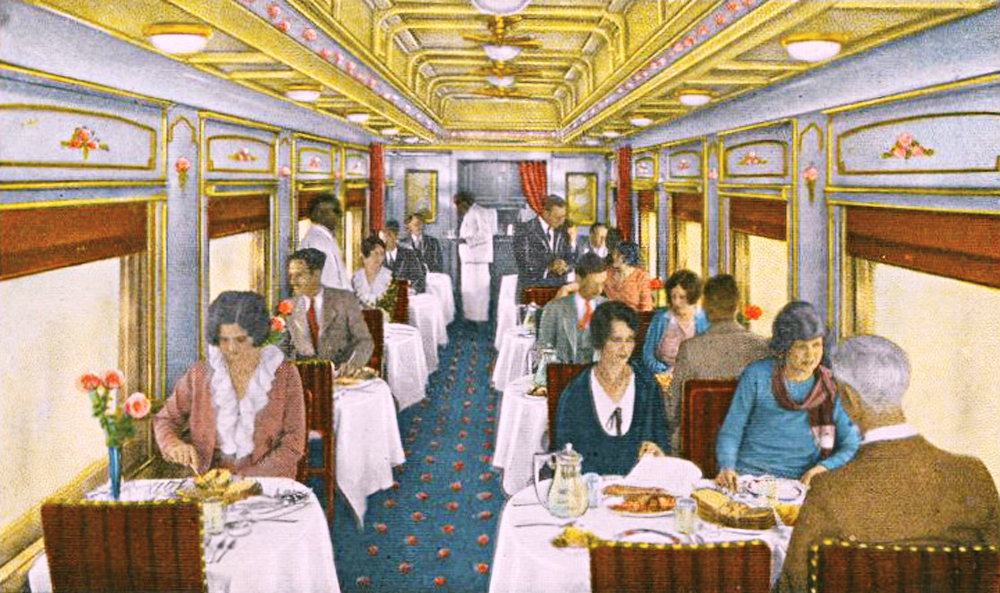— David Stare, Santa Rosa, Calif.
A Talgo trains achieve faster speeds through curves by enabling carbodies to swing outward in the curve using a pendular suspension. Passenger comfort is maintained because the train’s centrifugal force is offset by the gravitational force of the carbody. Talgo is a “passive” tilt system in that it requires no power-operated devices to tilt the carbody, unlike the “active” systems such as Acela or VIA Rail’s higher-speed trains.
Tilting reduces trip time only when the route has a reasonable concentration of curves with curve speeds between 50 and 80 mph. In this speed range, a Talgo-type train will be able to negotiate a curve at speeds 5-10 mph faster than conventional cars. Generally, tilting does not generate significant time savings unless the curve density on a route is 30 percent or higher.
How much faster a train could run on a specific route depends upon the number of curves, their degree of sharpness, and the posted speed limit for the railway line and curves. Many factors establish the posted train speed limit including Federal Railroad Administration track class, track gradient, operating restrictions such as grade crossings and signal systems, and finally, curves. Tilting can improve the speed only through curves. If a route has relatively few curves, the advantage from tilt equipment is negligible.
— James Michel, Amtrak engineering (Retired)













